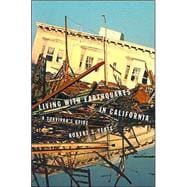Beginning with a brief introduction to the geological setting of earthquakes, Yeats leads readers through a lively and lucid narrative that
-- describes the major faults that threaten Northern and Southern California and Nevada,
-- explores topics ranging from earthquake forecasting and catastrophe insurance (the California Earthquake Authority is the largest residential insurer in the world) to the risks of tsunamis and soil liquefaction,
-- reviews the current level of earthquake preparedness and disaster response, including the role of governm








